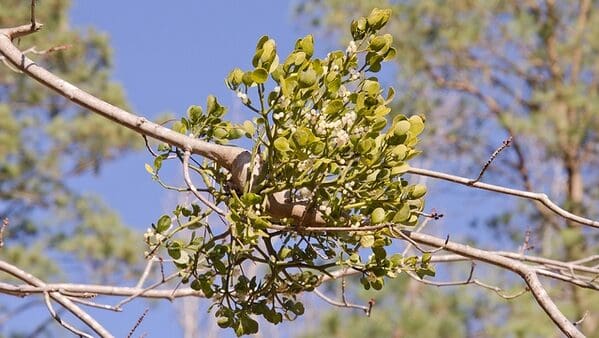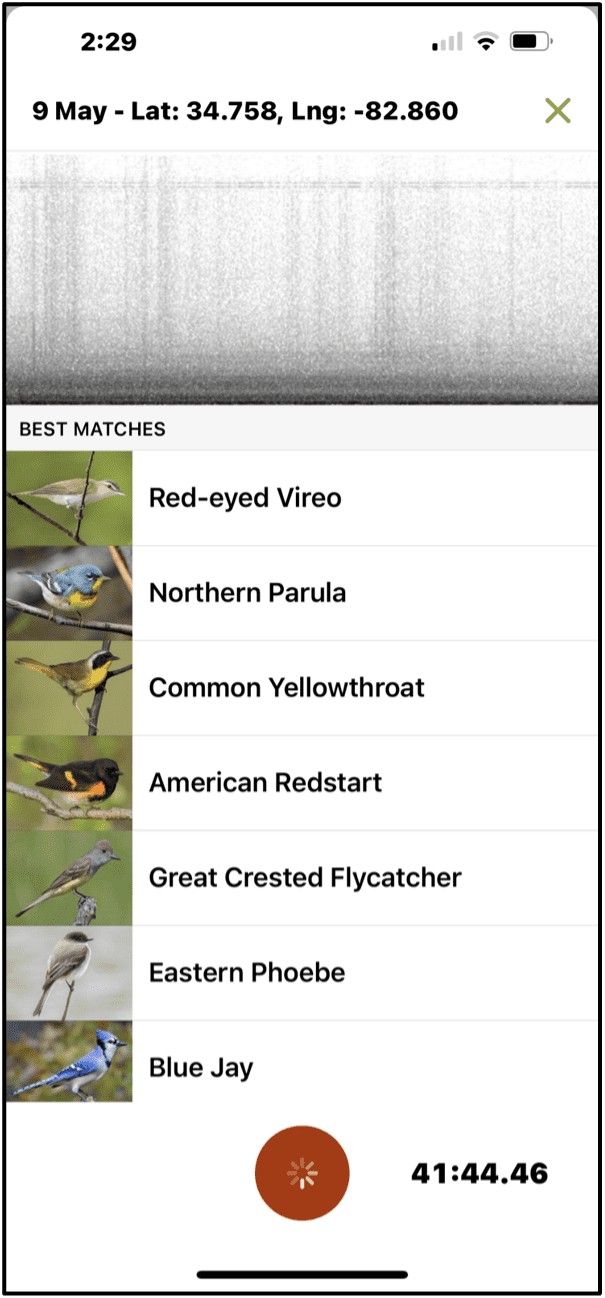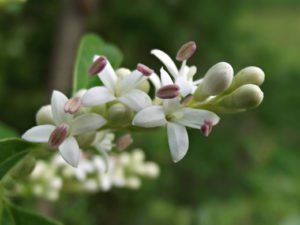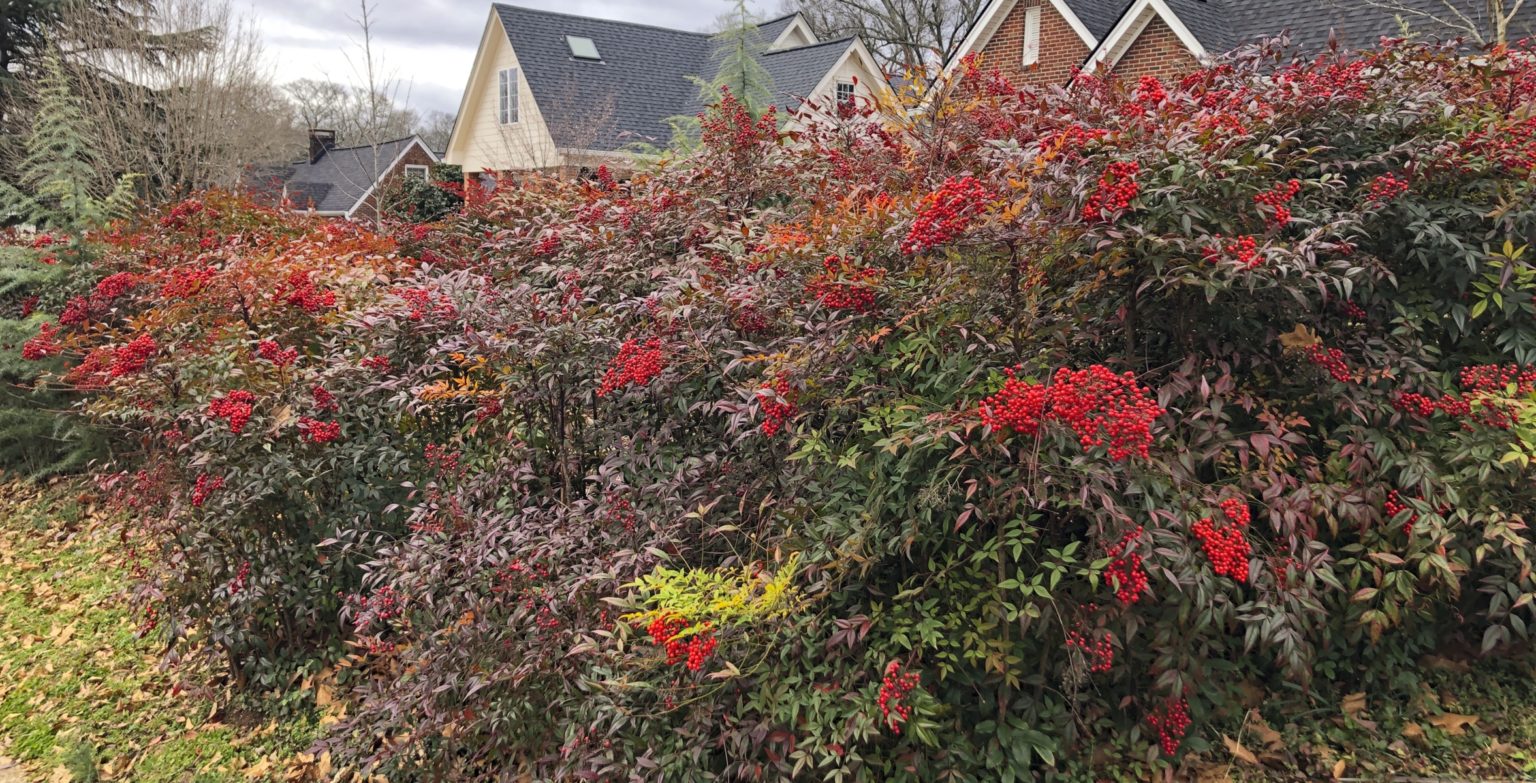At this time of year, many doorways are adorned with a small cluster of green foliage tied together with ribbon. In our culture standing underneath this bundle of greenery may make a good excuse to kiss your beloved, but it was once believed to lead inevitably to marriage. You guessed it! We’re talking about mistletoe. The tradition (or superstition?) of kissing under the mistletoe is fairly new, while the use of mistletoe dates back centuries. Druid priests believe mistletoe to be a sacred plant, and mistletoe is also referenced multiple times in Norse mythology.
Mistletoe is actually the common name for hundreds of species across multiple genera and plant families found all over the world (dang those common names!). But take heart, we have our very own native species of mistletoe! Phoradendron leucarpum, commonly known as American mistletoe or Christmas mistletoe is native to the southeast United States as well as parts of the southwest and up the west coast to Washington state.
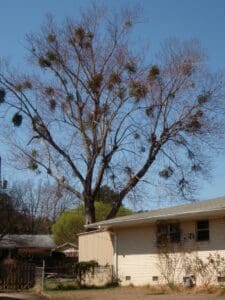
American mistletoe, like all types of mistletoe, is an obligate hemiparasite that utilizes haustoria to extract water and nutrients from its host. Wait…but what does that mean?! Let’s break it down because it’s really cool! The term obligate just means “restricted to a particular function or mode of life” and in this case it means mistletoe cannot live or complete its life cycle without a host. Hemiparasites live off their host but are still able to produce their own food through photosynthesis. This is in contrast to a holoparasite which has to get everything from its host and cannot photosynthesize. So, while mistletoe can produce some of its own food through photosynthesis it relies on its host species for water and mineral nutrients. Finally, haustoria are just modified root-like structures that allow the plant to penetrate the tissues and cells of the host and absorb water and nutrients. Fungi have these structures as well.
The genus name Phoradendron is derived from the Greek language and means “thief of trees”. American mistletoe is not fussy, it can use over sixty different species of tree as its host. While a dense population of mistletoe on a host tree can cause decline or even death, it is fairly rare. As an obligate hemiparasite, the mistletoe cannot live without its host so if it kills the host it will also die. If the host tree does perish, it becomes a dead snag which is great habitat for a myriad of other native species! It’s all part of the ecosystem.
American mistletoe does produce flowers, but they are small, non-descript, and are mainly pollinated by flies and wind. The flowers give way to white fruit which are a favorite of numerous bird species and mammals. The birds spread the seed by defecating on the branches of trees. American mistletoe is the host species for the great purple and other hairstreak butterflies (Atlides sp.).
I hope this gives you a lot to think about the next time you’re neckin’ beneath this holiday greenery!
Further Reading:
Mistletoe: A Natural and Human History by Lisa Ballard

